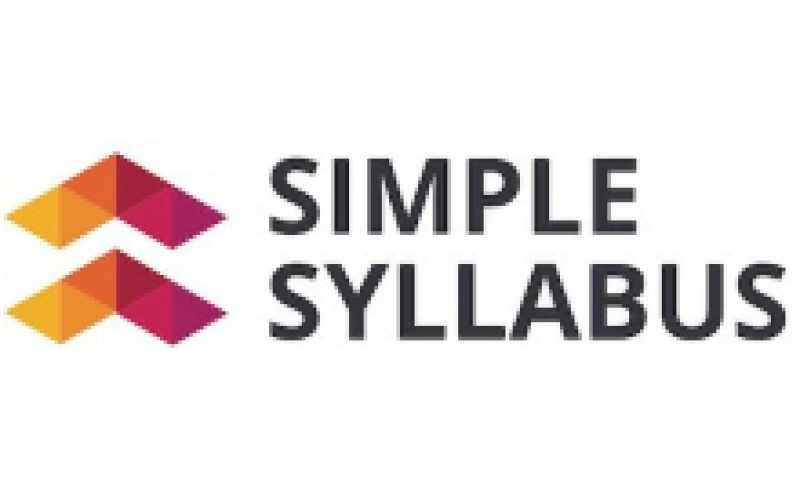An Effective Syllabus

Who's Doing This at UT?
Andrew Dell’Antonio, Butler School of Music, has grown more involved in disability advocacy both on and off campus. As a result of this work, he has been drawn to Universal Design for Learning principles and is applying them in the construction of his syllabus to set the class climate, identify specific learning expectations, and discuss options and accessibility.
How Can I Do This?
Your syllabus is an invitation to your students to participate in your course by informing them of its rationale, learning outcomes, and content. It is a contract between instructors and students that sets expectations for assignments and assessments. It is a guiding reference, offering a schedule, office hours, and available resources.
What is required on the syllabus?
In Texas, the legislature mandates that every course syllabus is given to students and made available online. The public version of your syllabus must include a brief description of each major course requirement (including each major assignment and examination), learning objectives for the course, a general description of the subject matter of each lecture or discussion, and any required or recommended readings.
We recommend your syllabus include the following:
- The course number, title, and mode (face-to-face, hybrid or blended, internet)
- The instructor’s name, office location, and office hours (note: office location is optional for the public version)
- If there are teaching assistants for the class, their names, office locations, and office hours (note: do not include in the public version)
- An overview of the class, including prerequisites, detailed discussion of course modality and its relationship to class meetings the subject matter of each lecture or discussion, and the academic/learning goals for the course and how they will be assessed
- Grading policy, including the means of evaluation and assignment of class grades, including whether plus and minus grades will be used for final class grade and whether attendance will be used for determining the final class grade
- A brief descriptive overview of all major course requirements and assignments, along with the dates of exams and assignments that count for 20 percent or more of the class grade
- A list of required and recommended materials, such as digital or physical textbooks, image collections, audio and audiovisual materials, supplies, articles, chapters, and excerpts as appropriate, identified by author, title, and publisher
- Final exam date and time (when available)
- A notice that students with disabilities may request appropriate academic accommodations from the Division of Diversity and Community Engagement, Disability and Access
What are best practices for creating your syllabus?
Although there is no one way to create an effective syllabus, the strongest syllabi come from well-designed courses. When you know the outcomes you want your students to learn, and you've determined how best to measure those outcomes, you are ready to map out the journey you want your students to take through your course. Here are some ideas when designing your course's roadmap:
- Contextualize the course. How does this course fit into the program, the discipline, the field?
- Personalize the course. Share a little information about you and your teaching philosophy in a discussion post or welcome video
- Clearly articulate student learning outcomes for the course.
- Next to each assignment, list relevant course learning outcomes to help students know which projects are meant to help them develop which skills.
- Provide a detailed schedule so students can manage their time.
- Consider offering students choice in how they move through the course. For example, offer students the opportunity to drop the lowest quiz grade, or provide students with the ability to choose among assignments or the means of turning in an assignment.
- Provide information about university services and resources that can support students both with their studies and their general well-being.
How do I get students to read the syllabus?
“I wish they would just read the syllabus. So many questions can be answered if they just read the syllabus.” Sound familiar? In addition to instructional strategies like the syllabus quiz, consider the design of your syllabus as an opportunity to capture the attention of and engage your students.
- How long is your syllabus? With so many State and University requirements for what policies and procedures must be included, how do you hold the line on length? Consider ways your syllabus can "pique students' interest in the expedition and its leader."
- Think about design. “Make effective use of white space (nobody likes crowded, wordy documents) by reducing text, increasing margins, enlarging line spacing, and adding quotes or visuals” (Newbold, 2016).
- "You" "I" or "We"? It depends. Newbold (2016) explains, “Talk to your readers as if they’re in front of you. Tell them what they are going to learn and how they’re going to learn it. Avoid calling them ‘students’ (and especially ‘pupils’!)."
- Ask students to contribute to the syllabus. Have them review it in class and make suggestions for changes.
- Make sure the syllabus is available in multiple places (on Canvas, handed out in class, on the instructor’s website, etc).
- If students ask questions that the syllabus answers, ask a student who has the course syllabus to find the answer on the spot.
Why Is This Important?
“The syllabus provides the first opportunity faculty have to encourage and guide students to take responsibility for their learning. … When reading a learning-centered syllabus, students learn what is required to achieve the course objectives, and they learn what processes will support their academic success” (O’Brien, Millis, Choen and Diamond, 2008).
An effective syllabus is a powerful teaching tool.
“The syllabus [can be] used as a knowledge repository, explained on the first day of class and never addressed again, or [as] a knowledge guide, introduced the first day and referred to repeatedly during the semester as a road map” (Doolittle & Lusk, 2007, p. 74).
- Listing learning outcomes helps students understand what is expected of them.
- Assignments aligned with learning outcomes and accompanied by rubrics can help students understand what skills they need to demonstrate.
An effective syllabus motivates students to learn.
“The more students believe they operate under their own control, the greater is their learning motivation” (Hativa, 2000).
- We often think of a syllabus as a planning tool for instructors in the course design process, but a well-organized and clearly communicated syllabus empowers your students to plan their time and energies.
- Enthusiasm is contagious. Instructors who use the syllabus to “model enthusiasm for the course material” (Thompson, 2007, p. 55) encourage student interest (Fink, 2012).
An effective syllabus is a contract between you and your students.
It may seem alarmingly serious to refer to the syllabus as a contract. While it's not something to stress about, it is important to understand that should grade or policy grievances arise, your syllabus may be reviewed by your department chair or administrator (Fink, 2012). Knowing this in advance is helpful to both you and your students.
- Explain to your students that this document is meant to be a shared agreement. Some faculty have students sign and turn-in a page acknowledging syllabus policies.
- Ultimately, the syllabus is a living document, and will need to maintain a degree of flexibility to adapt to changing circumstances. Consider writing in a statement that acknowledges this, and emphasizes your willingness to communicate any changes.
Fall 2025 Resources

CTL Sample Syllabus
Explore our sample syllabus for ideas in formatting, creating a warm tone, inclusive policies, and clear communication of outcomes, evaluations, and expectations.

UT Editable Syllabus Template
This syllabus template includes all of the content on the Provost's Office helpful Your Syllabus at UT Austin webpage. Except for the “Required Syllabus Content” discussed on this page, you can tailor the template to your course, as well as to your personal style and guidance for students.

Simple Syllabus
Simple Syllabus is a tool available to all instructors and teaching assistants at UT Austin. It provides a platform for faculty to use pre-made templates to customize and publish interactive syllabi directly in Canvas, creating a streamlined and user-friendly syllabus experience for students. Simple Syllabus is available for all courses in the Navigation Menu in Canvas. Training and Support are available from our Canvas team through workshops, office hours, and one-on-one support.
To view published examples, visit the UT Simple Syllabus library.

